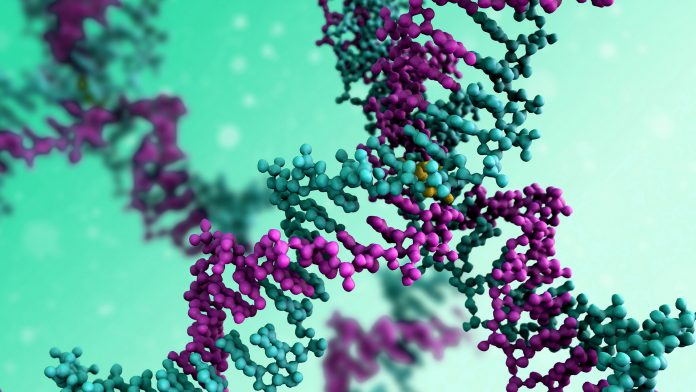A research team from Ludwig-Maximilians-Universitaet Muenchen (LMU) investigated DNA transcription and discovered that a fundamental process of life works differently than previously believed.
What is DNA transcription?
DNA transcription, also known as the basic process of life, is the process by which the genetic information stored in DNA is copied by specific enzymes called RNA polymerases into RNA molecules.
Despite the progression in the scientific understanding of the molecular mechanisms of DNA transcription, very little is still known about the spatial organisation of individual expressed genes. The only fact that researchers are certain of is that transcription occurs in the nuclear interior, where the most actively transcribed genes are localised.
A collaborative research team, led by Irina Solovei at LMU’s Biozentrum, has now investigated the spatial organisation of transcription and the behaviour of transcribed genes and discovered a mechanism that contradicts a prevalent concept.
What has this study revealed?
The most common hypothesis indicates that the RNA polymerases are grouped together in a stationary transcription factory, which activates the genes’ approach and pass through.
However, in gigantic, specialised chromosomes the transcription starts, and termination sites are fixed in space and the expressed sequences loop out. Therefore, in this case, genes remain stationary, but RNA-polymerases move along genes.
“I always suspected that there could not be two fundamentally different mechanisms of transcription in eukaryotes. This raises the question as to what moves and what remains stationary,” explained Solovei.
Scientists assume that the resolution of modern light microscopes is not good enough in terms of visibility, when it comes to rendering the DNA transcription loops observed in the chromosomes.
How important are the genes scientists identified?
Eukaryotes, which are frequently expressed genes, are often very short – too short for the available resolution – whereas large genes are generally not highly expressed and are therefore unsuitable for transcription studies.
Solovei’s team identified several long and highly expressed genes in mouse cells – which could be resolved under a light microscope – and investigated their structure. The scientists discovered that these genes unfolded during transcription, separating their ends, and strongly expanding into the nuclear space. Thus, they form transcription loops which are similar to those of the giant chromosomes.
Additionally, as the researchers demonstrated, the RNA polymerases move along these loops and carry nascent RNA molecules, undergoing a process of RNA maturation characteristic for eukaryotes.
“The shape and expansion of transcription loops from harbouring chromosomes suggest that transcription loops are stiff structures,” noted Solovei.
The authors hypothesise that highly expressed genes become stiff because they are densely decorated with multiple nascent RNAs, which in combination with RNA-binding proteins, form voluminous particles.
This hypothesis is supported by a polymer modelling of expressed genes discovered by Leonid Mirny and their research team. By simulating the behaviour of transcribed genes, the researchers showed that modelled genes recapitulate biological observables, but only upon acquiring a certain stiffness.
“The most striking thing for me is the sheer size of transcription loops – up to 10 micrometres,” said Mirny. “It seems that a single long gene can unfold and traverse most of the nucleus.”
“The results of the study show,” concluded Heinrich Leonhardt, head of the laboratory Human Biology and Bioimaging, “that even in our time dominated by molecular biology, microscopy remains an important and powerful tool to study basic biological questions.”





